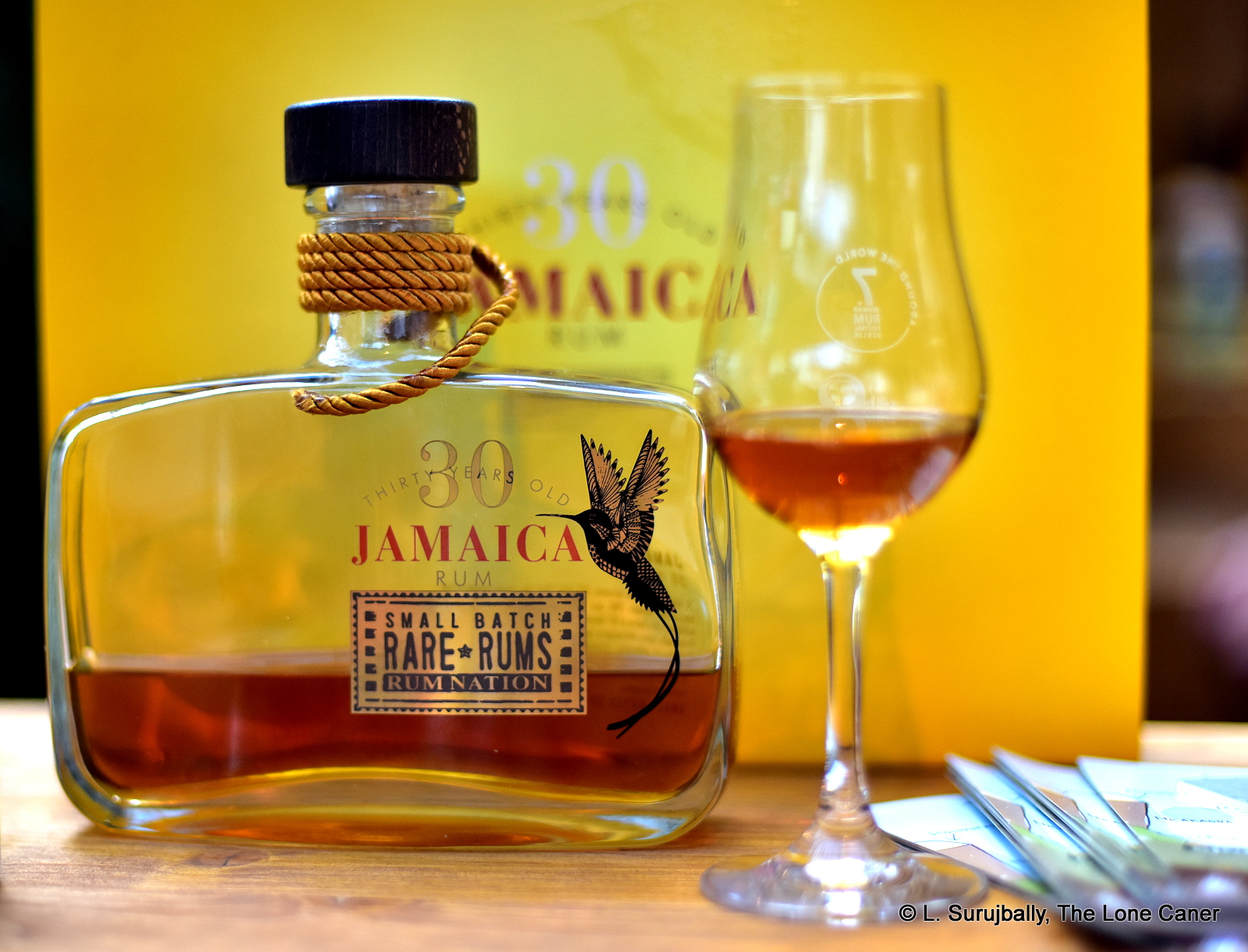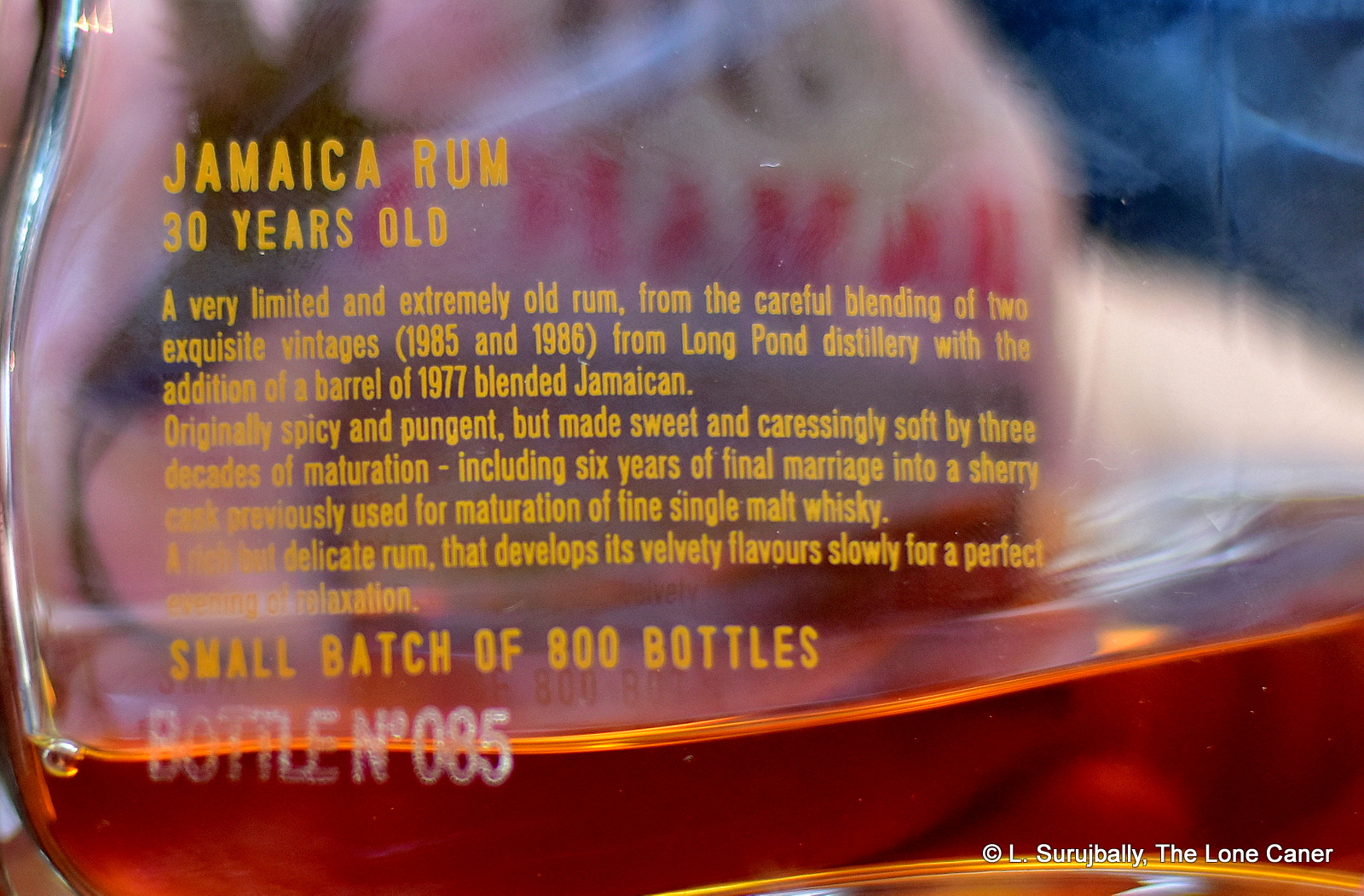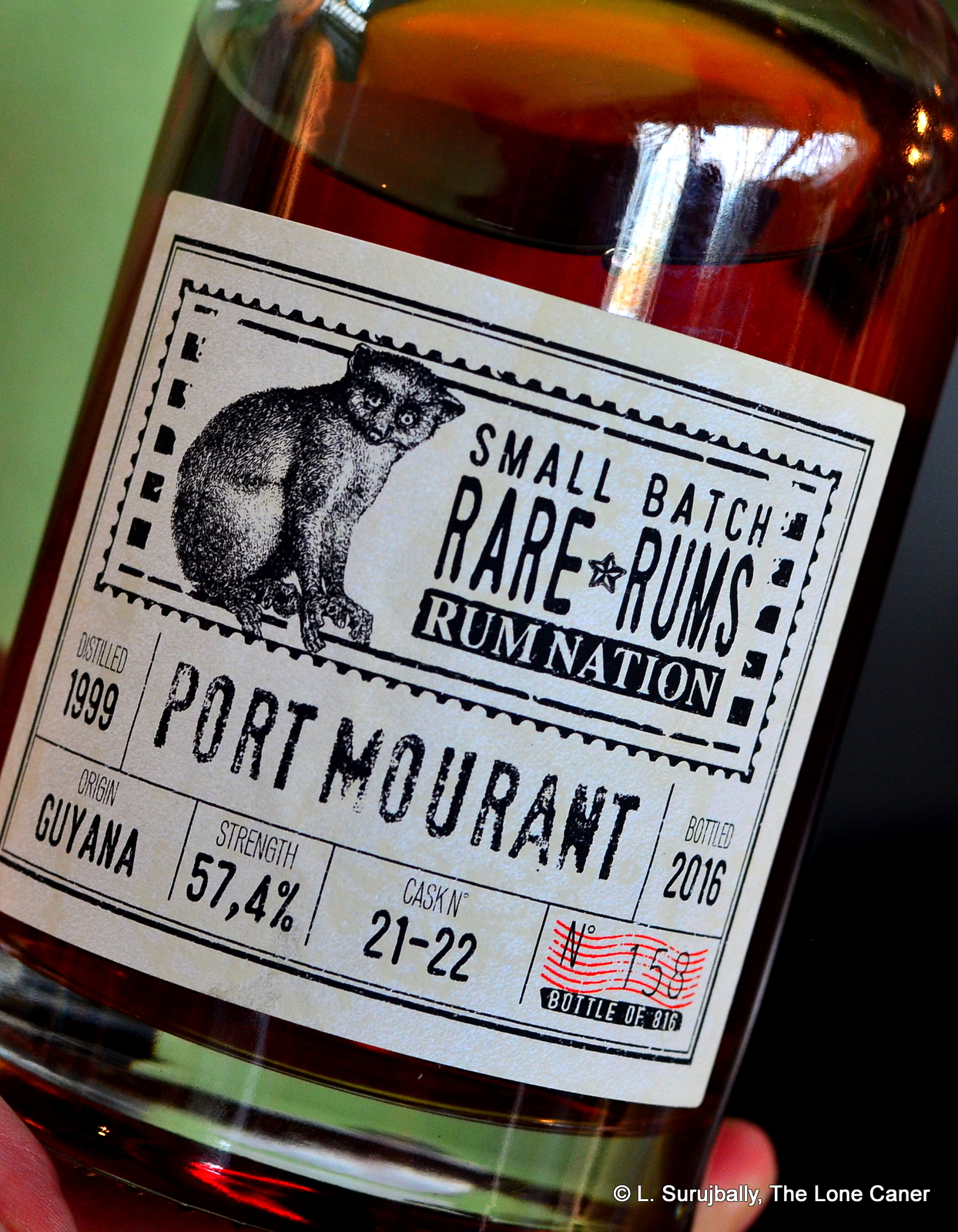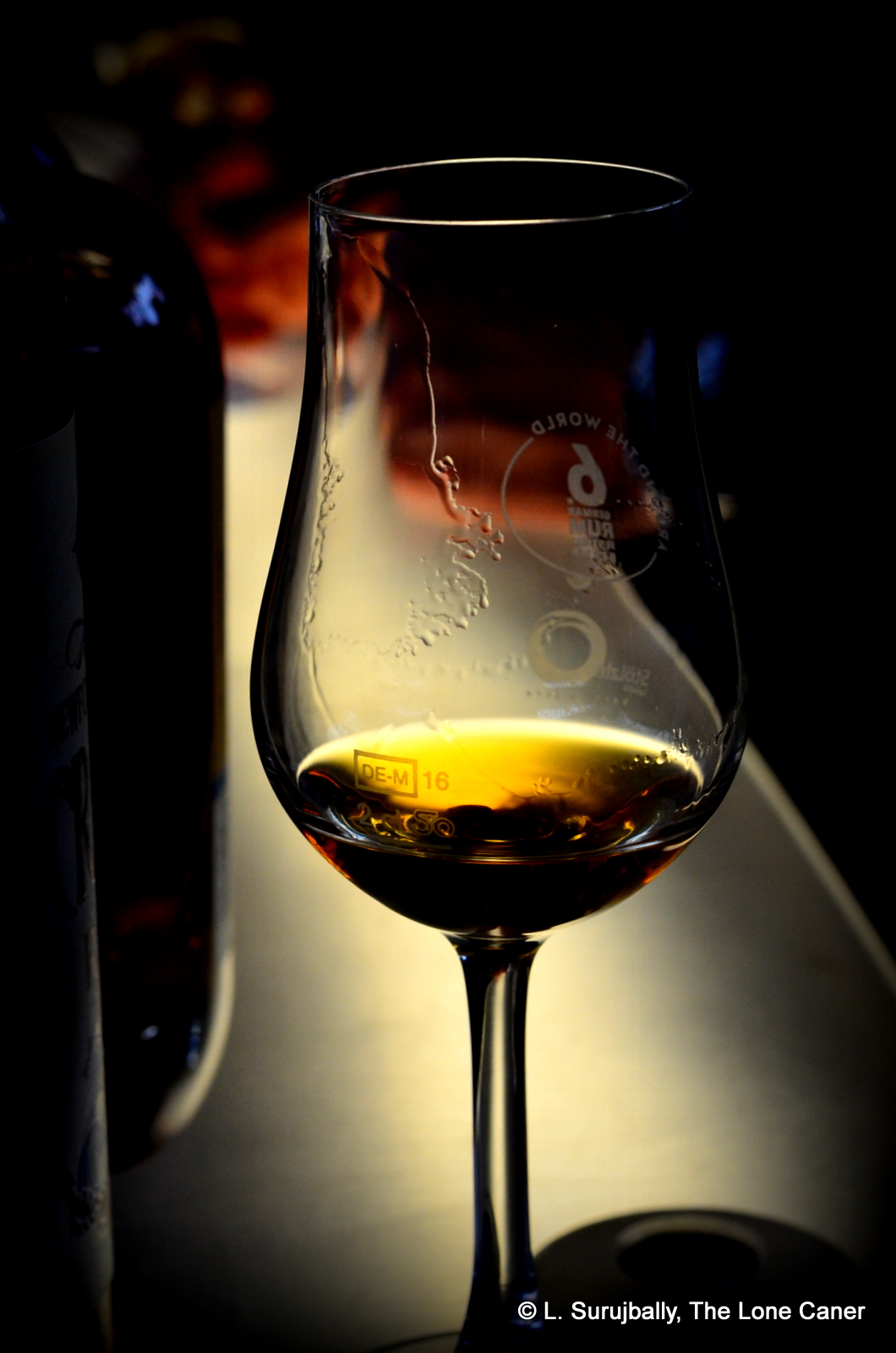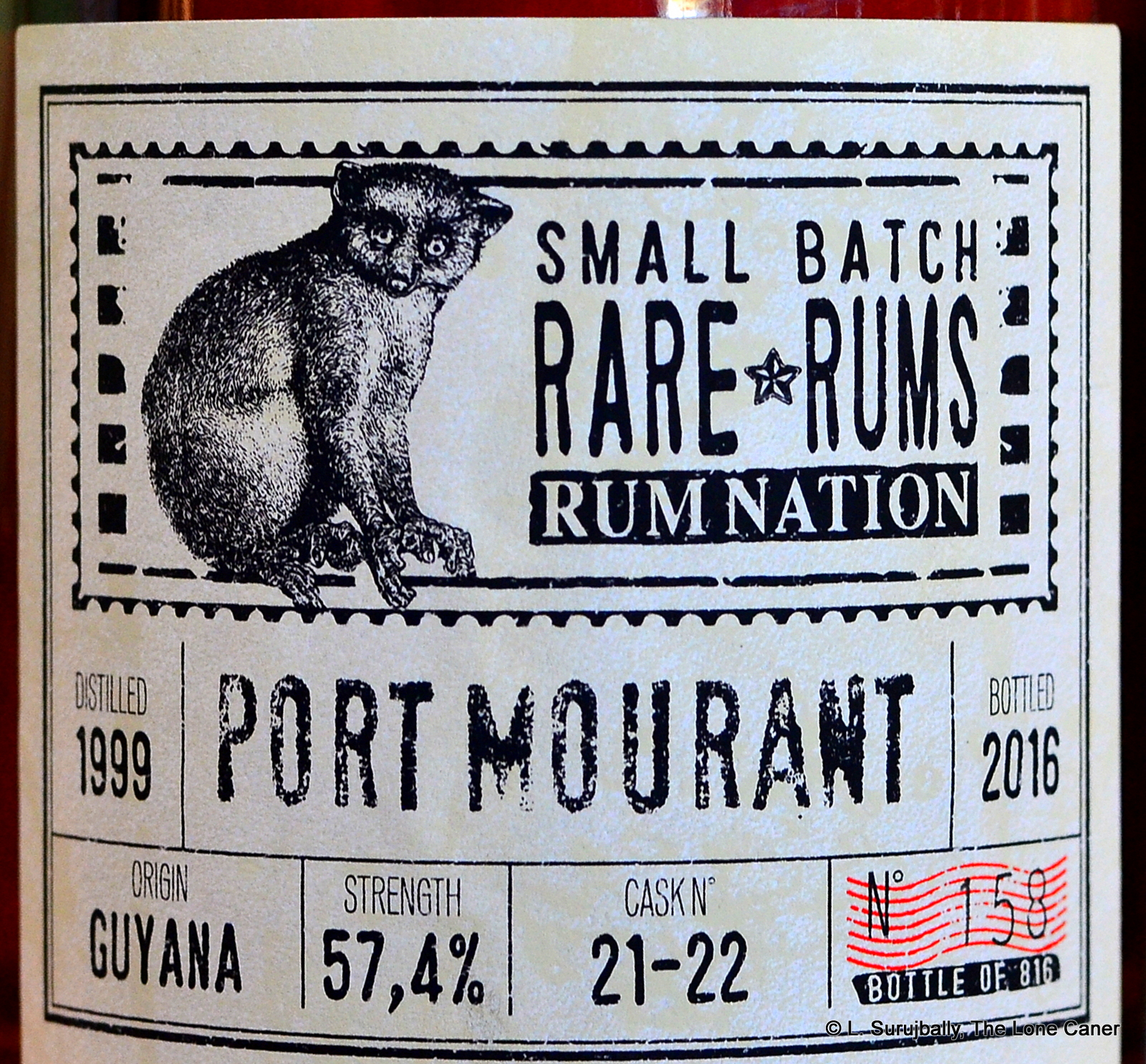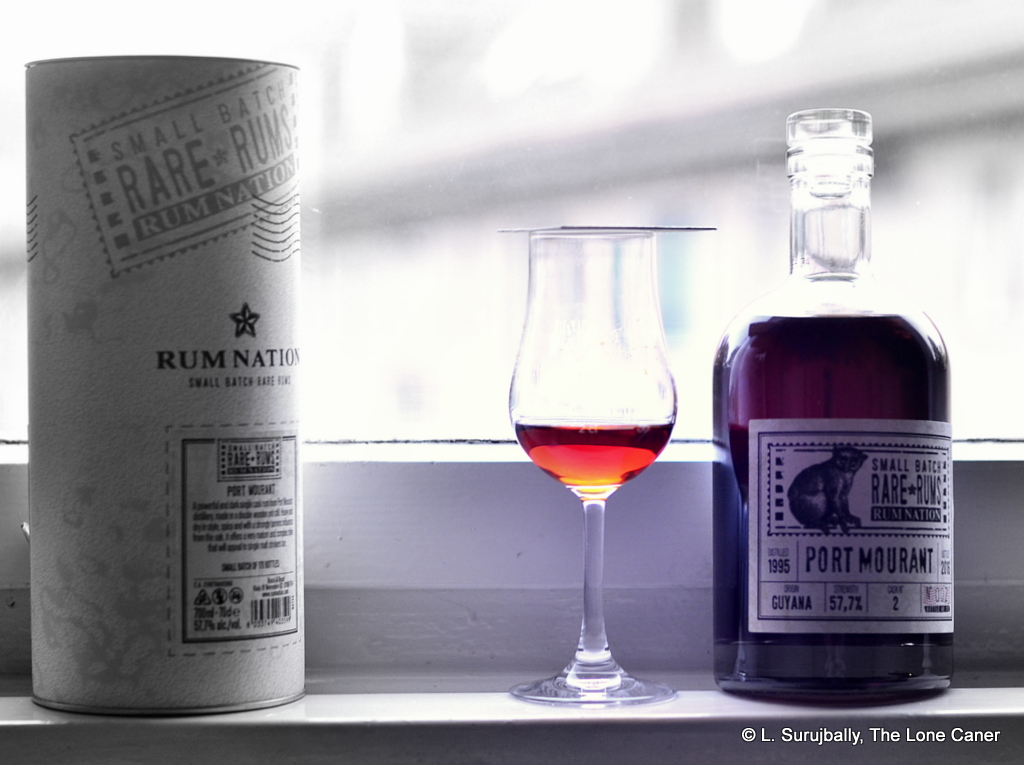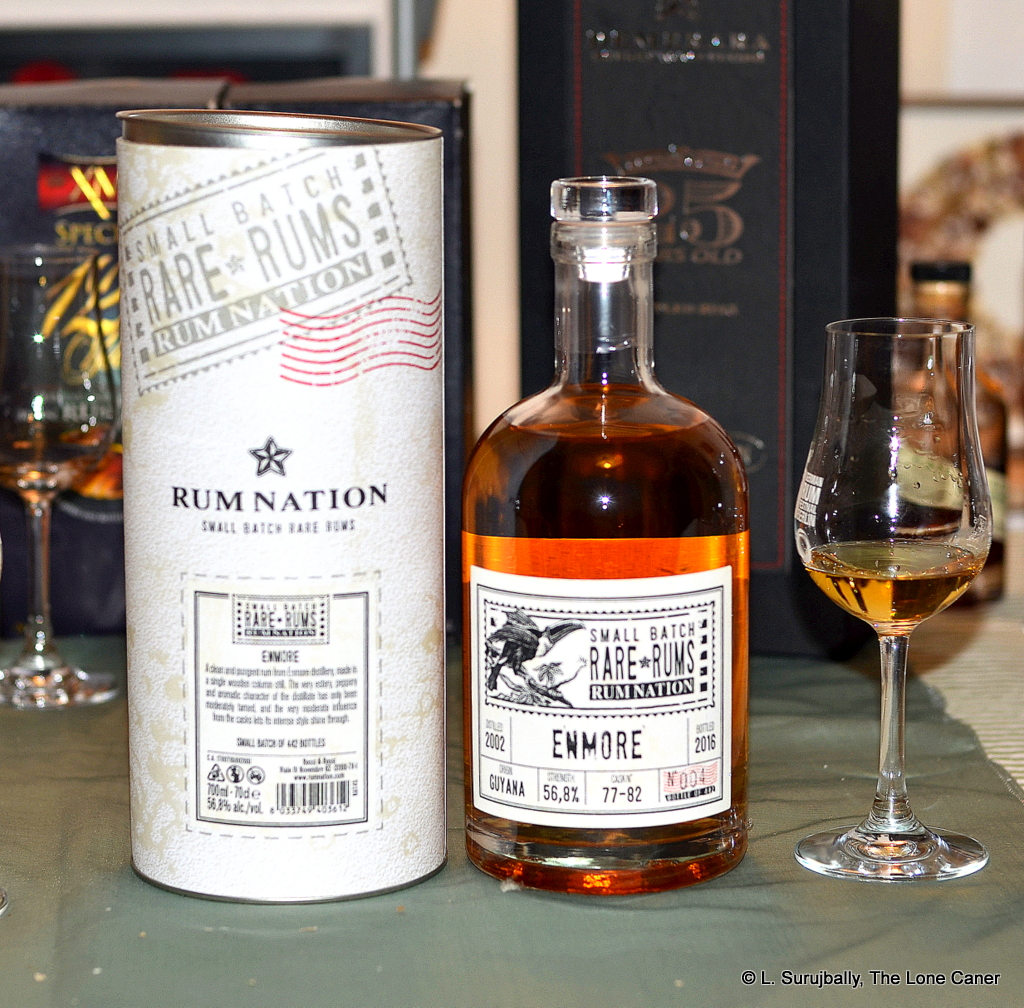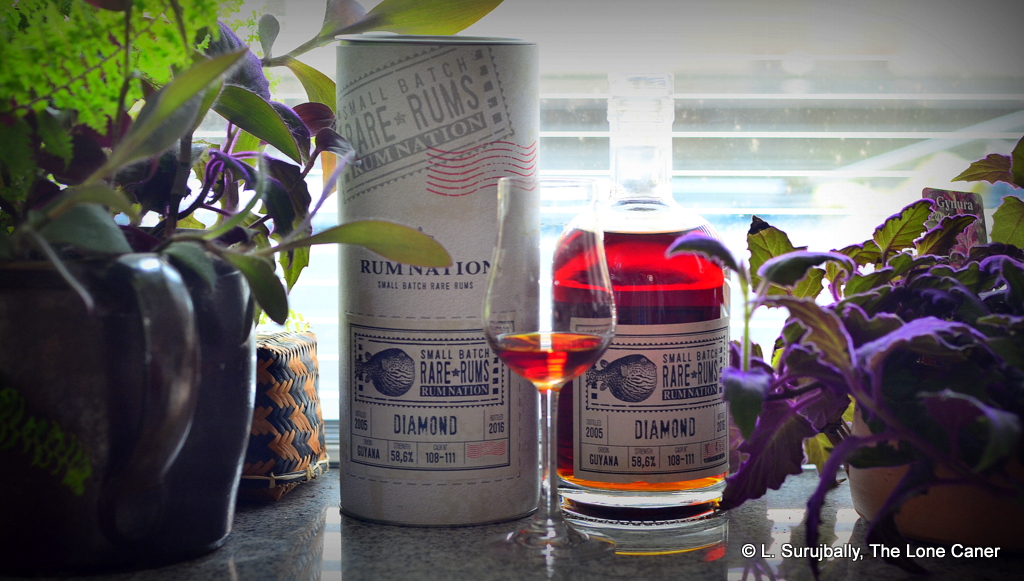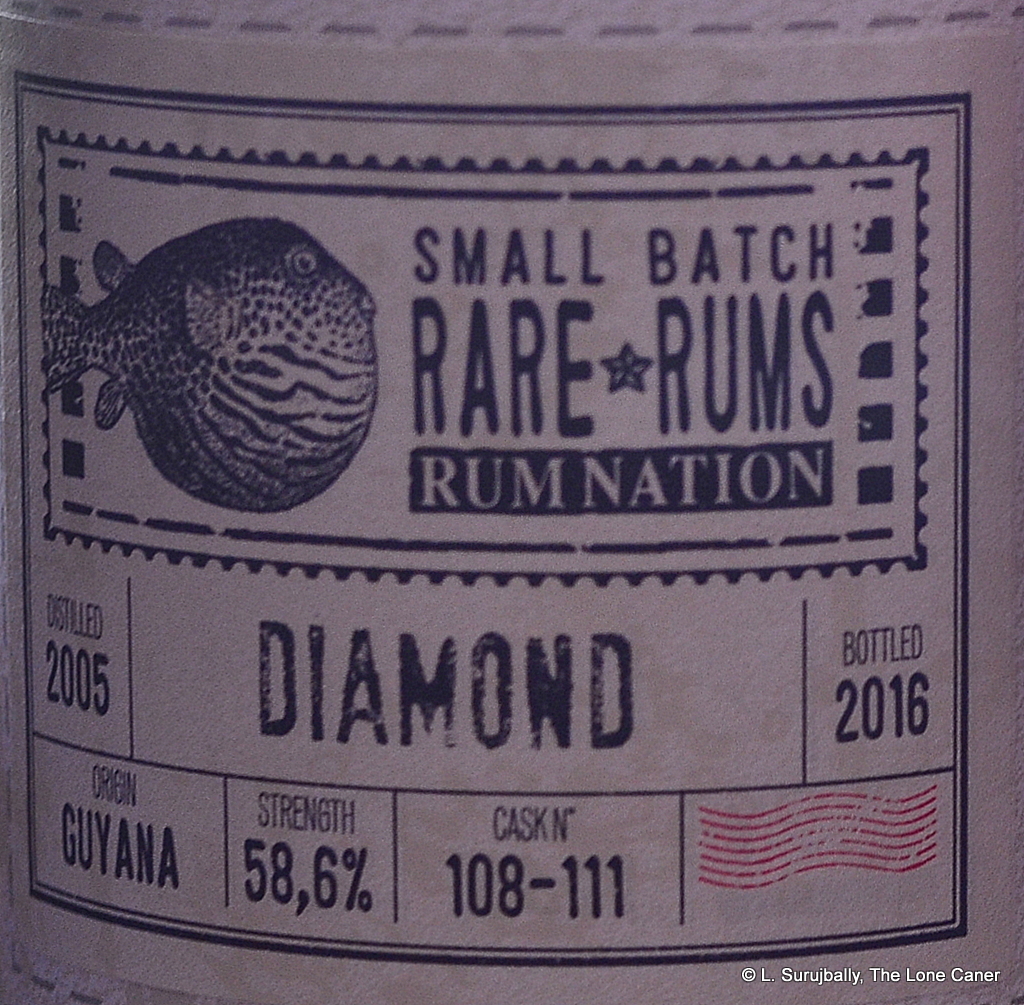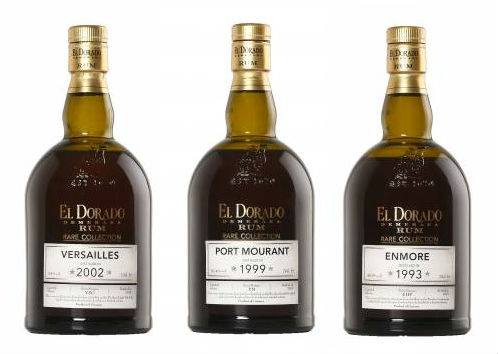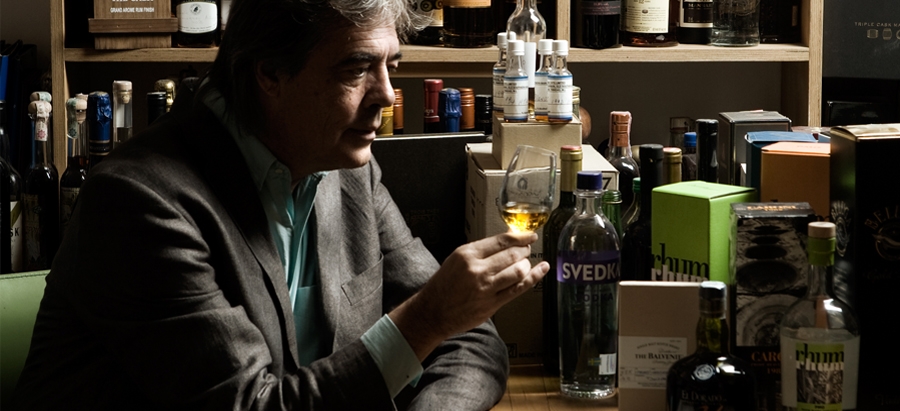
Photo (c) 2013 congresodelron.com
Luca sounds tired. The boss of Velier has just returned from Cape Verde off the coast of Senegal, where he was investigating small rum producers like in Haiti, has been caught up in the online discussions of the “Rare” issues, gave an interview to DuRhum (in French), and is now on his way to Morocco to attend some business and help shoot a documentary, before heading off to Cape Verde again. I catch him in the back of a taxi, but he’s willing to talk a little. Truthfully, when it comes to rums, the man is always ready to talk, and it’s never just a little. Maybe that’s one reason he and I get along.
We discuss his interview with Cyril, but my own interest is much more focused, and gradually we get to what I want to talk about — DDL’s new Velier replacements, called the “Rare Collection” and I had opined that premature news of their introduction could have been handled better. Commercial considerations had prevented Luca from going on record before this, but apparently DDL have now given him their blessing, and he knows I want facts rather than speculations.
“I honestly wanted to tell you back in December, when your “Wasted Potential” article came out,” he says. “But we (DDL and myself) had agreed nothing would be said about the Rare Collection until the time for official press releases and introductions came around. So I had to be quiet.”
“It happens,” I shrug, stifling my rush of petty irritation, since, like most people, I hate being wrong. “Why don’t you step me through the sequence of events regarding the issue?”
He settles into what I call his ‘presentation’ voice and talks nonstop for several minutes. Much to my surprise, the conception of these three rums goes back to January 2015, a full year ago. Following the retirement of Yesu Persaud, the new CEO of DDL (Komal Samaroo) met with Luca and told him they were going to make ‘Gargano-style’ rums themselves following the full-proof, single-still, limited-edition principles, and as such the ability of Velier to bottle from DDL’s stocks would cease. “But I have to be clear,” Luca said. “Aside from the Skeldon, I never ever just walked into the warehouse and sampled at random and said I wanted this barrel or that barrel – I always and only got shown a limited selection by DDL and chose from them. And the vintages were getting younger all the time – I was hardly ever seeing stuff younger than the early 2000s any more.”
He’s admitted it before, and confirmed that initially the situation made him sad – it was something like seeing your own child grow up and move out of the house – but proud as well. It showed that there was real potential by a major distiller to go in this direction, and that the full-proof concept was a viable commercial proposition. And it made sense for DDL to fold these rums into the larger el Dorado brand.
“Which would in any case always be associated with you,” I cut in. “For the foreseeable future, DDL’s full proofs will live in your shadow.”
“That’s not important,” he says earnestly. “It’s not about ego for me. It’s about rum: authentic, honest, tropical aged, full proof rum. If DDL makes them, the rumworld is just as well served, because good rums are being made and sold.”
“One could argue that DDL let you take the risk and open the market and then moved in to capitalize on your success,” I point out. I’m not on anyone’s side on this matter and I know business is business (it’s not personal, right?). DDL didn’t get to be what it was without some very sharp people at the top, and while I am surprised it took this long for them to get in on the action, they are finally doing something.
I can almost see him shaking his head. “No. Because it’s their rum. I always insisted that DDL was mentioned on our labels – because I never felt it was ‘mine’…the name of Velier was only ever in the fine print at the back. I found a few diamonds, sure, but never pretended to own the mine, you know? And I did the same for the Clairins.” I think he’s being just a bit disingenuous here, personally, because one does not become a successful businessman without at least a little talent, aggro and braggadocio, and I suspect he knows perfectly well how synonymous his name has become with full proof rums in general, and Demeraras in particular. But I let it pass, and he continues.
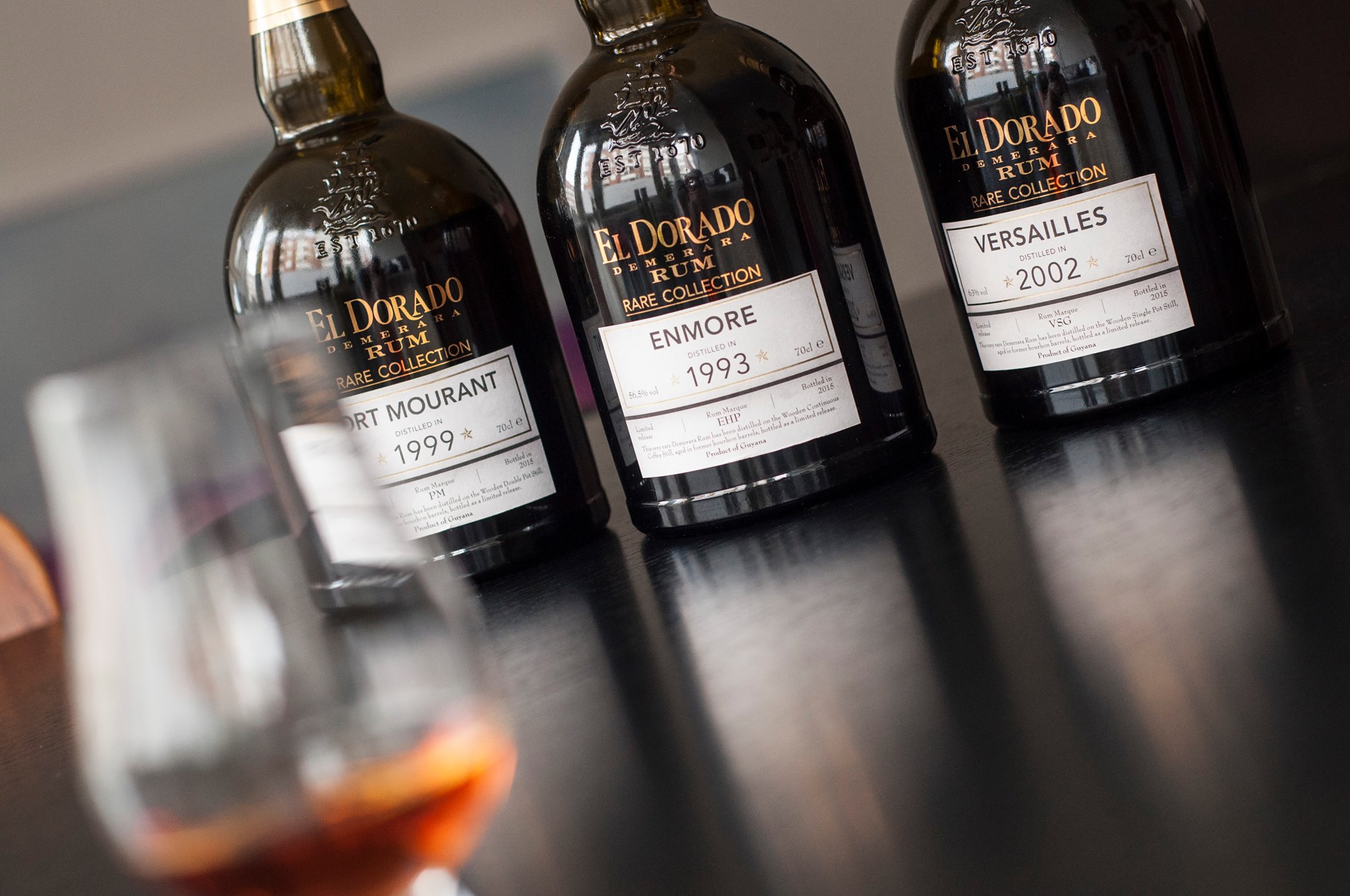
Photo (c) Mads Heitmann, Romhatten
“So by November of 2015 a lot of the work was done – the selection of the vintages, the label mockups. Some samples went out to Europe –“
“Hang on,” I interrupt. “Exactly how much were you involved in all this?”
“Not at all.”
“Seriously?”
“No. I did not select the barrels, I did not choose the vintages, I had nothing to do with advertising or label design. All I knew was that there would be an Enmore, a PM and a Versailles. By the time I received samples in December, it was all complete, and my only involvement was as the distributor for Italy.”
“Why are they only being sold only Europe?”
He hesitates a moment and I can sense him choosing his words with some care. “DDL is a Guyanese company,” he says at last. “And I think their information gathering and knowledge relate and are geared more to the North American market than the European one. In North America it’s always been difficult to introduce new spirits into their states-segmented markets; and there has never been a really strong movement or tradition or knowledge of craft full-proofs. It was only lately — with Samaroli and a few others becoming available, with online media like Facebook, with the reviews of English language rum bloggers — that the profile of such rums has increased and the potential more fully understood. But in Europe full-proofs have always sold well and been widely appreciated – indeed that has always been my primary market. So it made sense to start there.”
“With the potential to cross the Atlantic in the future?”
He shrugs. “That’s for DDL to decide. I hope so.”
“So we’re in December now. My own article on the missed opportunities of DDL came out around that time.”
“Yes, and a lot of people read it. And I wanted to contact you to advise you that there were indeed new single-still rums coming out. But my arrangement with DDL forbade that, so…”
I’m still a little miffed about the matter, but it’s water under the bridge and there’s nothing I can do except admit I got it wrong and move on.
“Why do you think DDL never responded to my article, or contacted me?”
“I have no idea.”
“Because it strikes me as strange that a major new bottling is being issued to the market, and there was no advance knowledge, no teasers or sly hints or even massive advertising to stimulate interest.”
“Well, they did send some samples to one of the Rumfests late in the year – I believe to Belgium – “
“And it received almost no publicity at all.”
“It was just for evaluation purposes, I think, not an advertising campaign to kick off the release. That was supposed to come in this year.”
Well, DDL is run by some smart people, and I suppose they have reasons for what they do and how they do it. However, I also believe they are underestimating the force-multiplying power of social media in a big way and maybe my mind just works differently since I’m a consumer as well as a writer, not a company marketing guru.
It occurs to me that with respect to communication, the premature release of information on the Rares must have caught everyone off guard. “So now we come to 2016,” I say, following that thought. “Your company somehow issued a webpage link to show these rums as becoming available, on January 13th. Then it disappeared. What happened?”
His embarrassment is palpable over the long distance telephone line. “That was a mistake,” he says ruefully. “My graphics people worked so fast that the mockup and catalogue update were all done ahead of time. They didn’t bother to check with me before posting it up, because they didn’t see anything special about a new item on the catalogue…we do, after all, add stuff constantly. I was in Cape Verde then, away from communications, and as soon as I came out and realized what had happened, I pulled the link immediately. By then the news was all over the place.”

Photo (c) Mads Heitmann, Romhatten.
“And then?”
He lets out a deep breath. “The story went viral in the online rum community. You know this, you followed it.”
Indeed I had. The story flashed around the world in less than a day. Wes at the FatRumPirate pushed out an article on the three rums on the 15th; a Danish blogger, Mads Heitmann, was able to get a complete set of the three bottles and reviewed the PM 1999 ln the 19th. And on top of that, he posted prices on his site and on Facebook, which went viral as fast as the original post from Velier’s site, and changed the entire direction of the story. The news was well and truly out there and could not be called back, which demonstrates what I mean about the power of Facebook and Twitter and Tumblr and all the rest.
“But none of it had any more to do with me,” Luca argues. “I made my sincere apologies to DDL, explained to them that the initial, unpriced, posting was an error I tried to correct and not a leak of any kind. I was waiting for a green light from them to make a public announcement and start publicizing.”
I suppose I can accept that, since all my notes and private discussions support it. “The story now started to get bigger than just you, because aside from the annoyance of the rum community about the releases just popping out of nowhere, which is a minor matter, they now had to contend with the pricing. And that was no small thing – it was deemed exorbitant.”
“Your article didn’t help,” he says, half laughing, half accusing, referring to the essay I then wrote on January 20th, where I both complained about the introduction and expressed my hopes for their quality.
The conversation seems to have come around to the point where I’m the one answering questions instead of him; still, the point is valid. “I wasn’t trying to. At the time I was pretty put out. DDL should have read the tea leaves and done damage control immediately, gotten ahead of this story. Back then, I solicited their input without response. Okay, I’m small fry, a small blogger in a wide world of them, and it was an opinion piece, and yet I don’t think I was wrong; and this was now an issue affecting consumers all over the map – somebody should have stood up, posted online, gotten involved, calmed the waters.”
“I can’t speak to that,” he responds, with a note of finality.
The cost per bottle is of interest to us as consumers, so I persist. “What can you tell me about the price, on the record?”
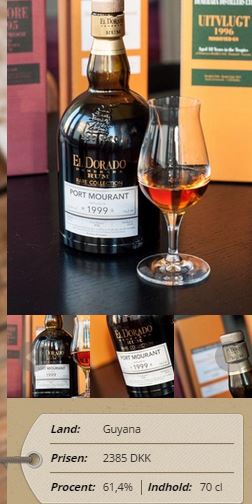
Picture crop (c) Romhatten.dk
“I think the Danish numbers are high,” he admits. Privately, I had thought so too, and the KR6500+ (~€870) initially quoted on January 19th for all three bottles together has in fact been reduced in some online shops in Denmark. Factor in the very high alcohol taxes in that country, and the base shop prices (before markups) to consumers are probably closer to expectations. Still high, but relatively more affordable.
“The price in Italy will likely be around the level of equivalent Veliers, plus maybe 10-15%. But I can’t say that for sure across Europe, because I sell only in Italy, to shops, not to individuals, and taxes and markups vary. But they are not as expensive as you made out to be.”
Since I’ve argued that price is a function of brand awareness and exclusivity as well as production costs, I ask the question that’s been bugging me all this time. “What’s the outturn of the range?”
“About 3,000 bottles for each expression is my guess. I’m not entirely sure of the exact numbers”
“And future issues?”
“I can’t say: I’m hearing that maybe an annual release of two bottlings, with about the same quantity as these.” Which gives us all hope, I think. Two is not as good as four or five, yet I don’t know that many full-proof rum lovers who would complain too much. At least they’re getting something.
The answers are getting shorter, and I sense we may be coming to the end of this conversation. I only have one more. “You’re distributing the rums in Italy, and have had a long association with DDL. You’re hardly a disinterested party. But as a simple lover of rum, putting aside any bias as much as you can, what do you think of the Rare Collection?”
There’s a smile in his voice as he notes the care of my phrasing. Or maybe he’s just thinking of these rums, his now-grown children, with fondness, and delights at an opportunity to speak of them. “I received samples in December 2015, and Daniele (Biondi) and I tried them together with five or six other Enmores, Port Mourants and Versailles rums we had from previous years. And I am telling you, these are every bit as good. They lost nothing, and preserve everything in my principles – tropically aged, no additives, single-still, cask strength. The taste is amazingly good, and I think they are great additions to the full proof Demerara lineup. It may be too early to tell, but if they continue to issue such rums in the future, these first editions may one day be worth quite a bit, the same way my first bottlings appreciated on the secondary markets.”
His tone has that evangelical fervor, the ring of utter personal conviction, that always characterizes his public presentations, and I gotta admit, the enthusiasm is infectious. He may or not be right, and others may disagree with his assessment in the months and years to come – but there’s no doubt he really believes they’re that good. I’ve heard him speak that way about his other rums and rhums as well, and we know Velier’s track record, so perhaps we should just take it at face value. Until shops actually start selling them and we start seeing reviews out there, not much more to be said. I think we’re just about done here.
I scratch my head, look at my notes and questions, and realize an hour has gone by. Luca is now buying organic apples for his pretty wife through the taxi window, waiting to see if there’s anything else, but he’s covered it all for me, filled in most of the blanks. What little information I have from DDL confirms most of this. So I give him my regards and thanks, we exchange notes on our movements around the world in 2016 and agree to see if we can meet up somewhere, have a relaxed session and maybe drink a sample or ten. And, of course, as always, to talk rums.
***
Other notes
This was not a formal interview. It was a discussion between the two of us, which is why I wrote it the way I did. From his perspective, it was to some extent also publicity, even damage control. It’s no coincidence that this and Cyril’s more formal interview came out so close together. Had I not written the two other essays about DDL already, I would not have bothered, but this wraps things up and substitutes such opinions and guesses as I have expressed, with more factual information.
The formal release of these rums for sale with all the marketing blitz, brass bands and bunting is supposed to be the end of January / early February 2016.
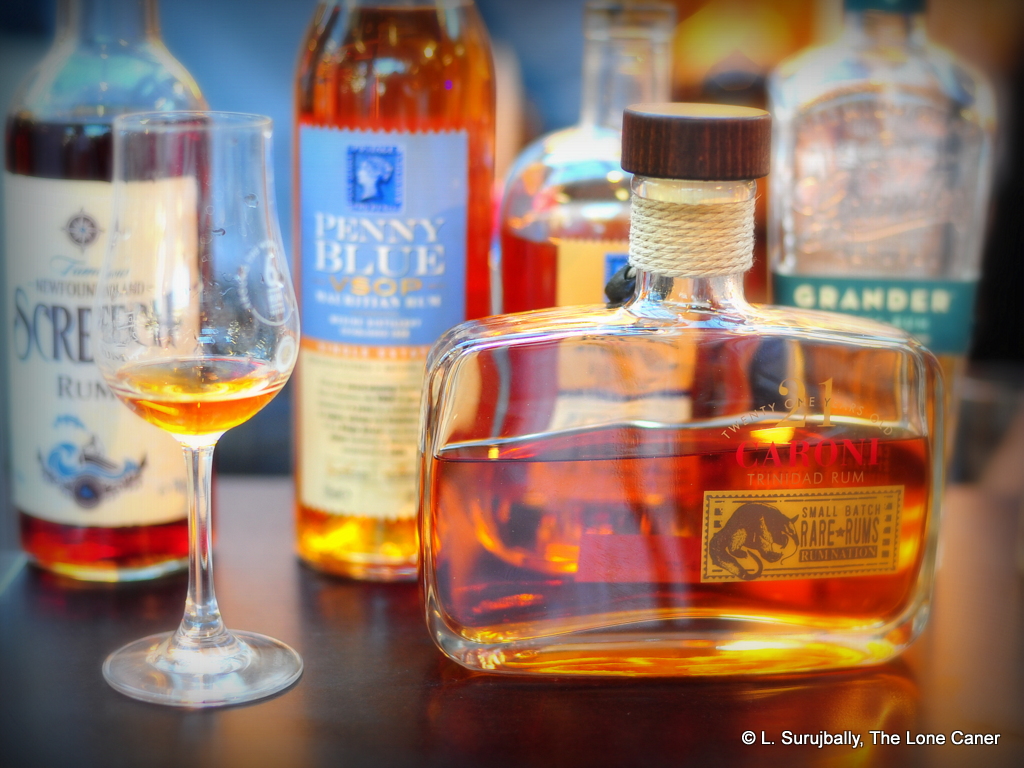

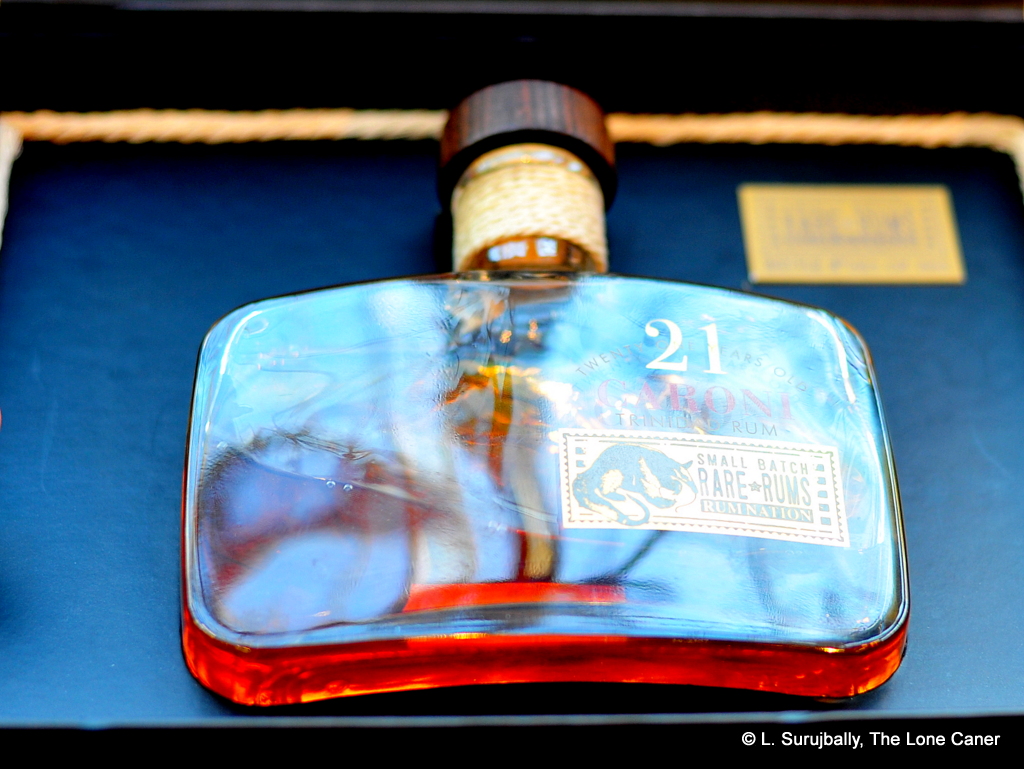
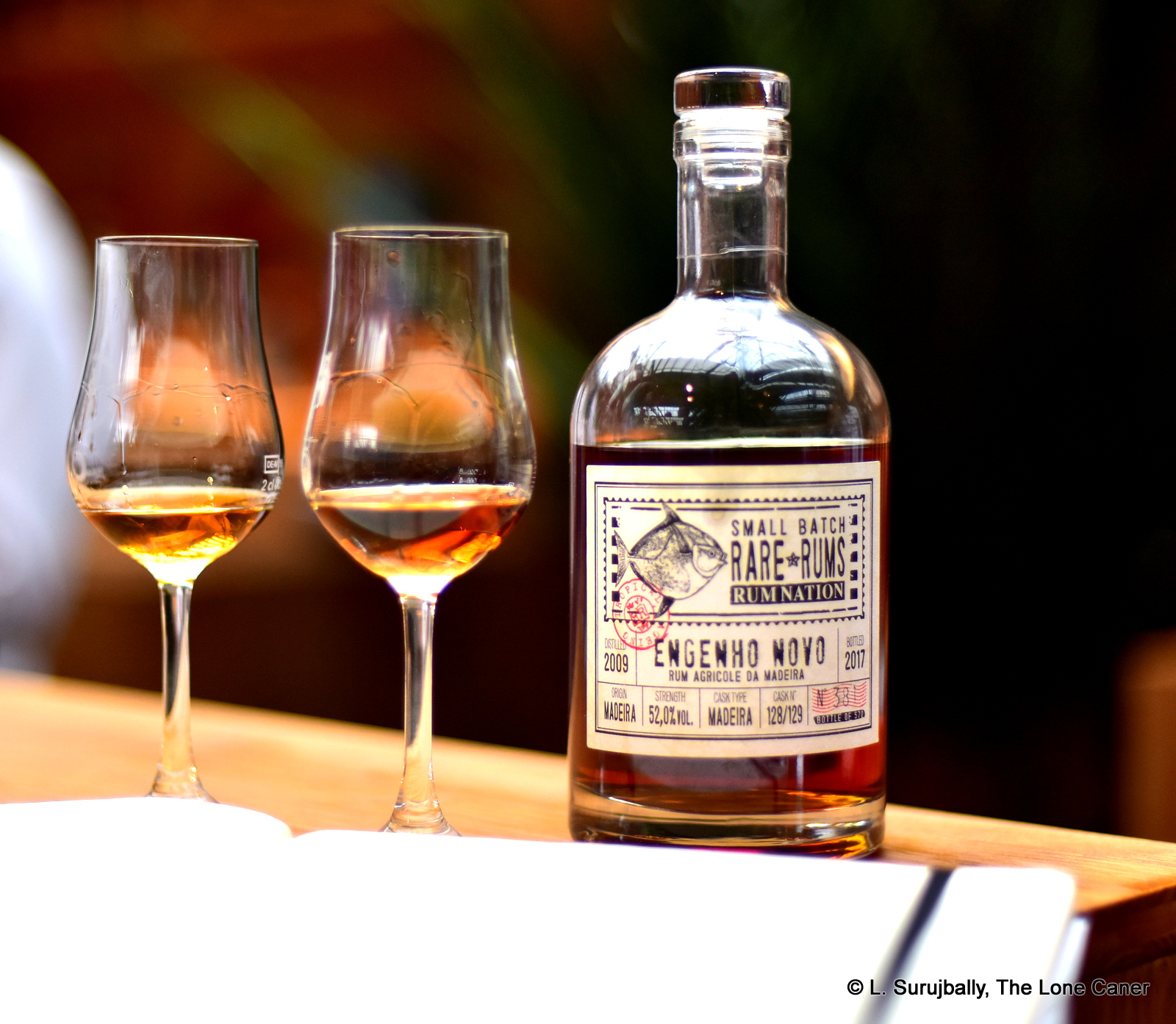
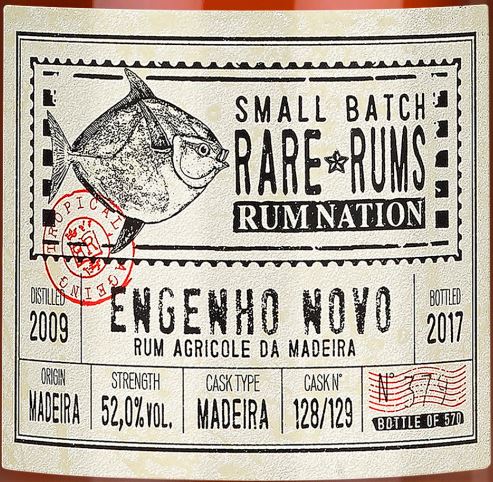 I’ll provide some more background detail in the Other Notes below, but for the moment let’s just read off the fact sheet for the rum which is very helpfully provided on the Rare Rums website and on the bottle label itself. This is a cane juice distillate and can therefore be classed as an agricole-style rhum; distilled 2009 and the four barrel outturn from a column still was aged in Madeira casks, providing 570 bottles in 2017, with a strength of 52%.
I’ll provide some more background detail in the Other Notes below, but for the moment let’s just read off the fact sheet for the rum which is very helpfully provided on the Rare Rums website and on the bottle label itself. This is a cane juice distillate and can therefore be classed as an agricole-style rhum; distilled 2009 and the four barrel outturn from a column still was aged in Madeira casks, providing 570 bottles in 2017, with a strength of 52%.